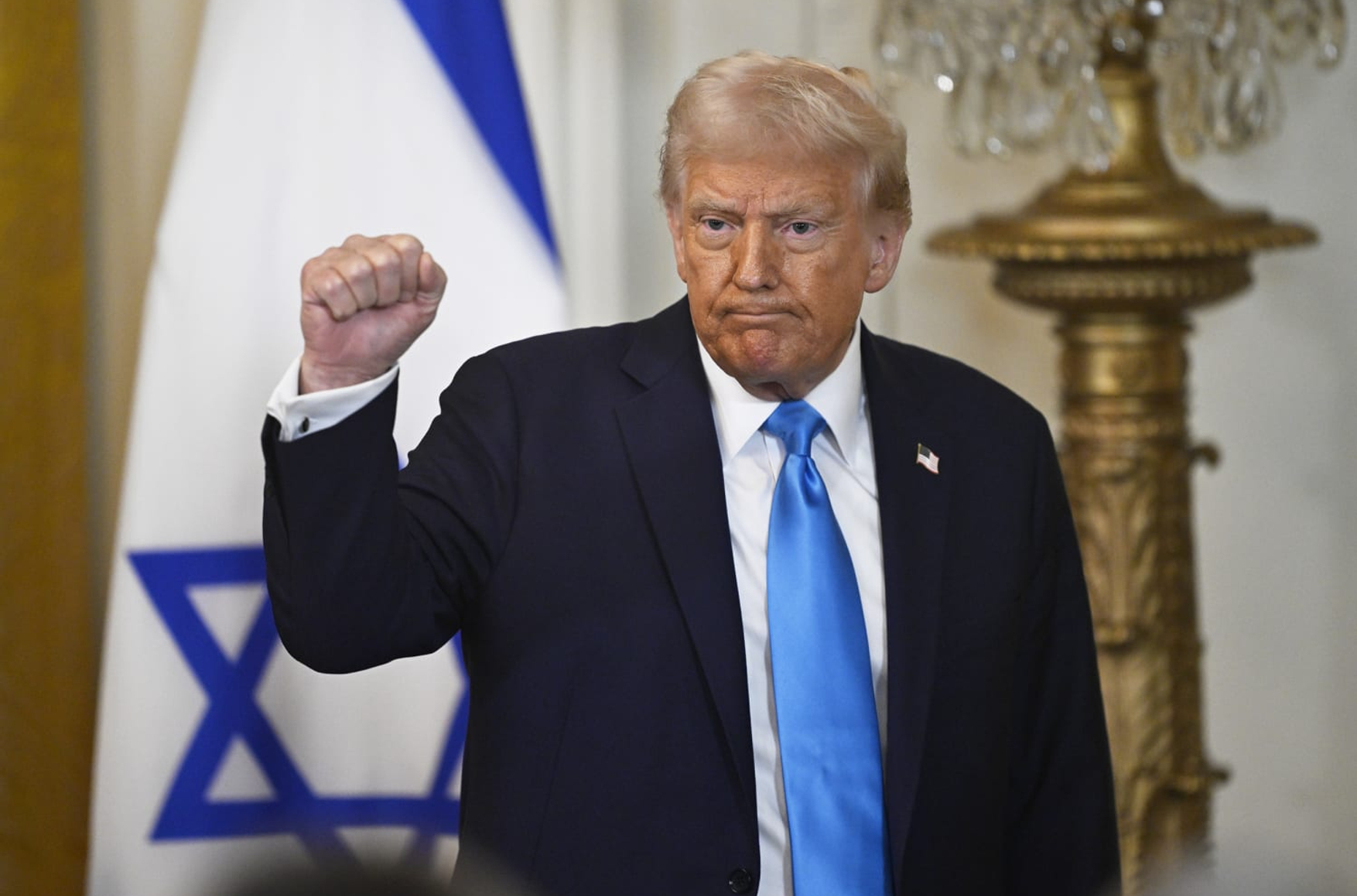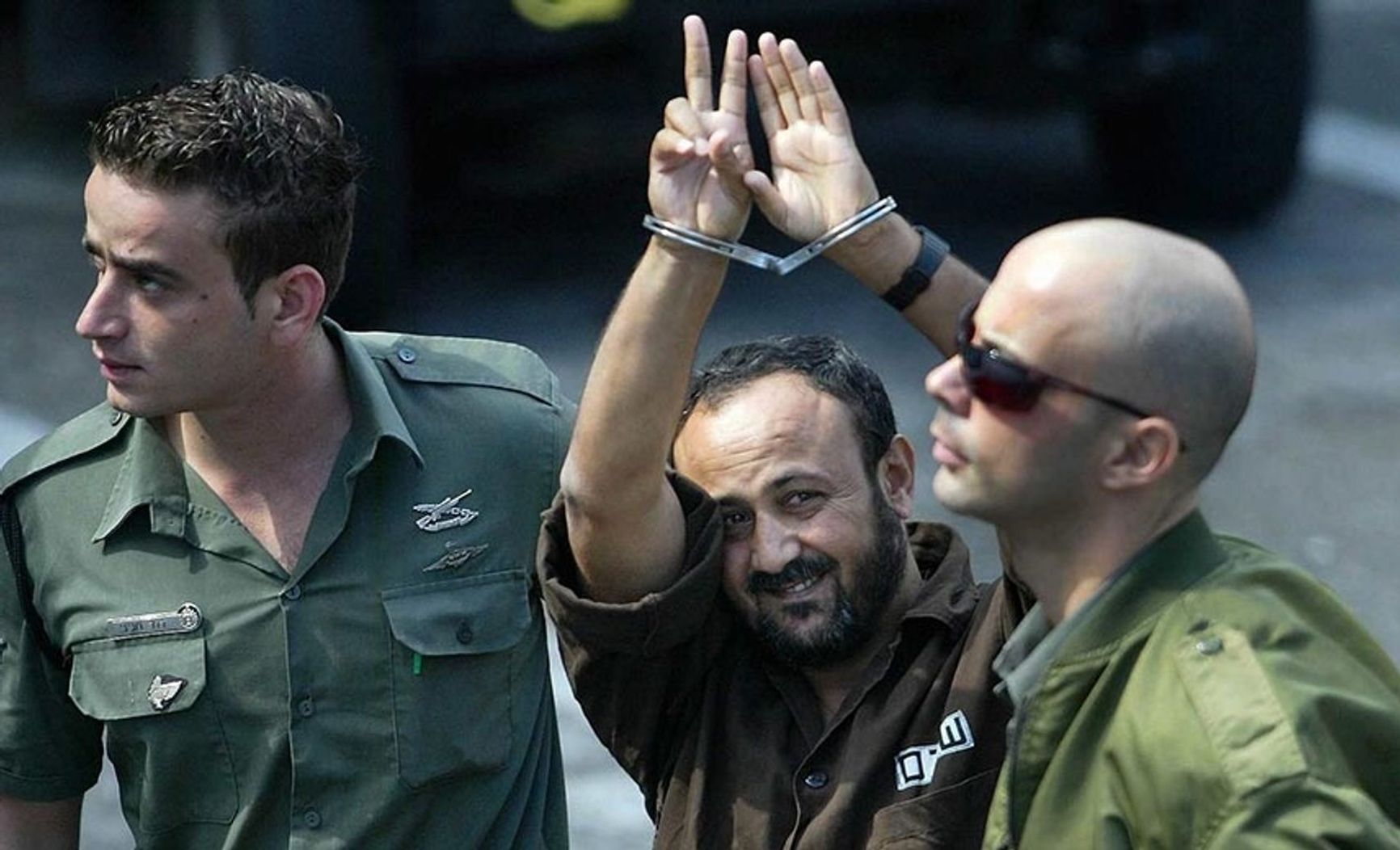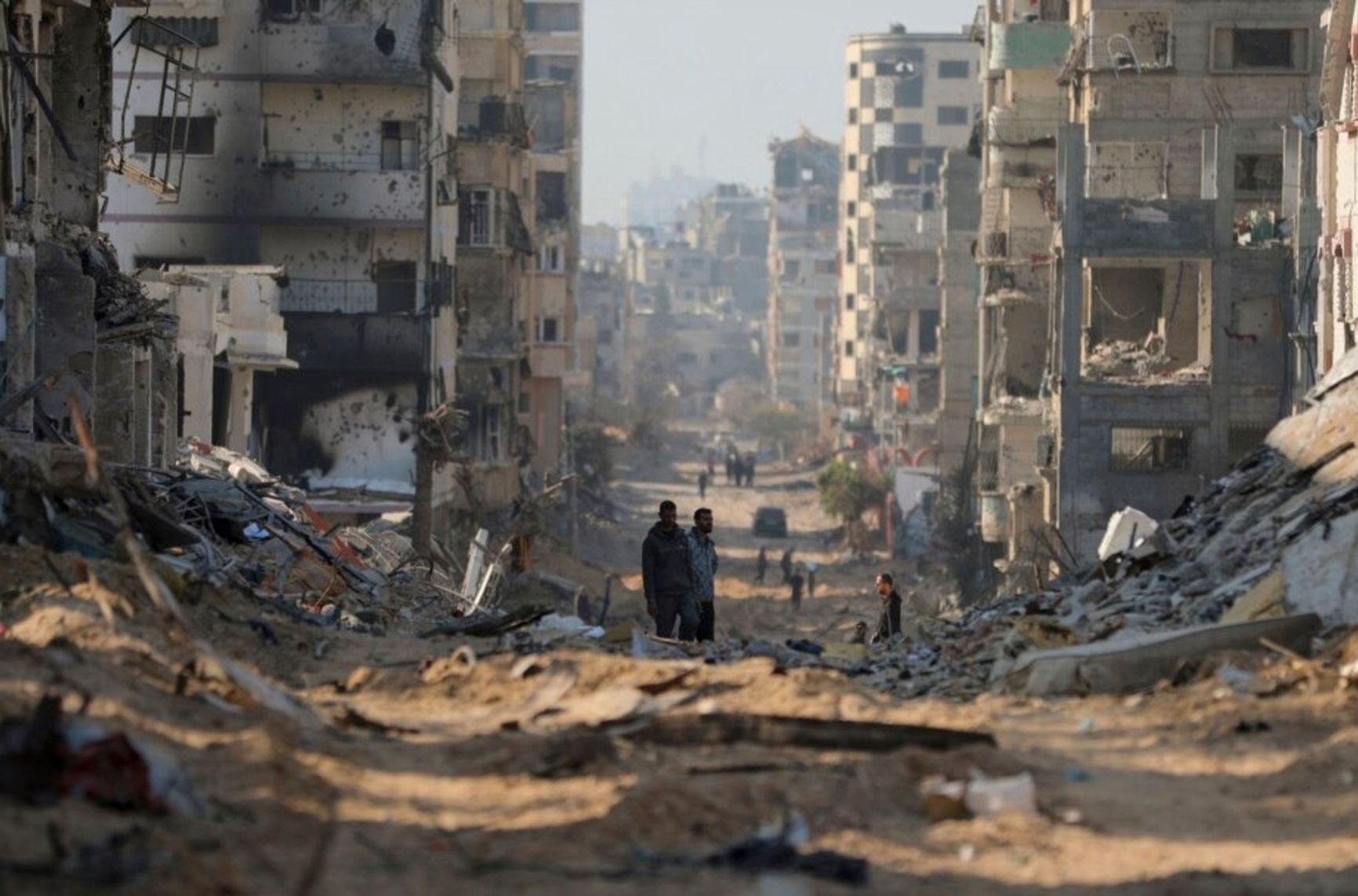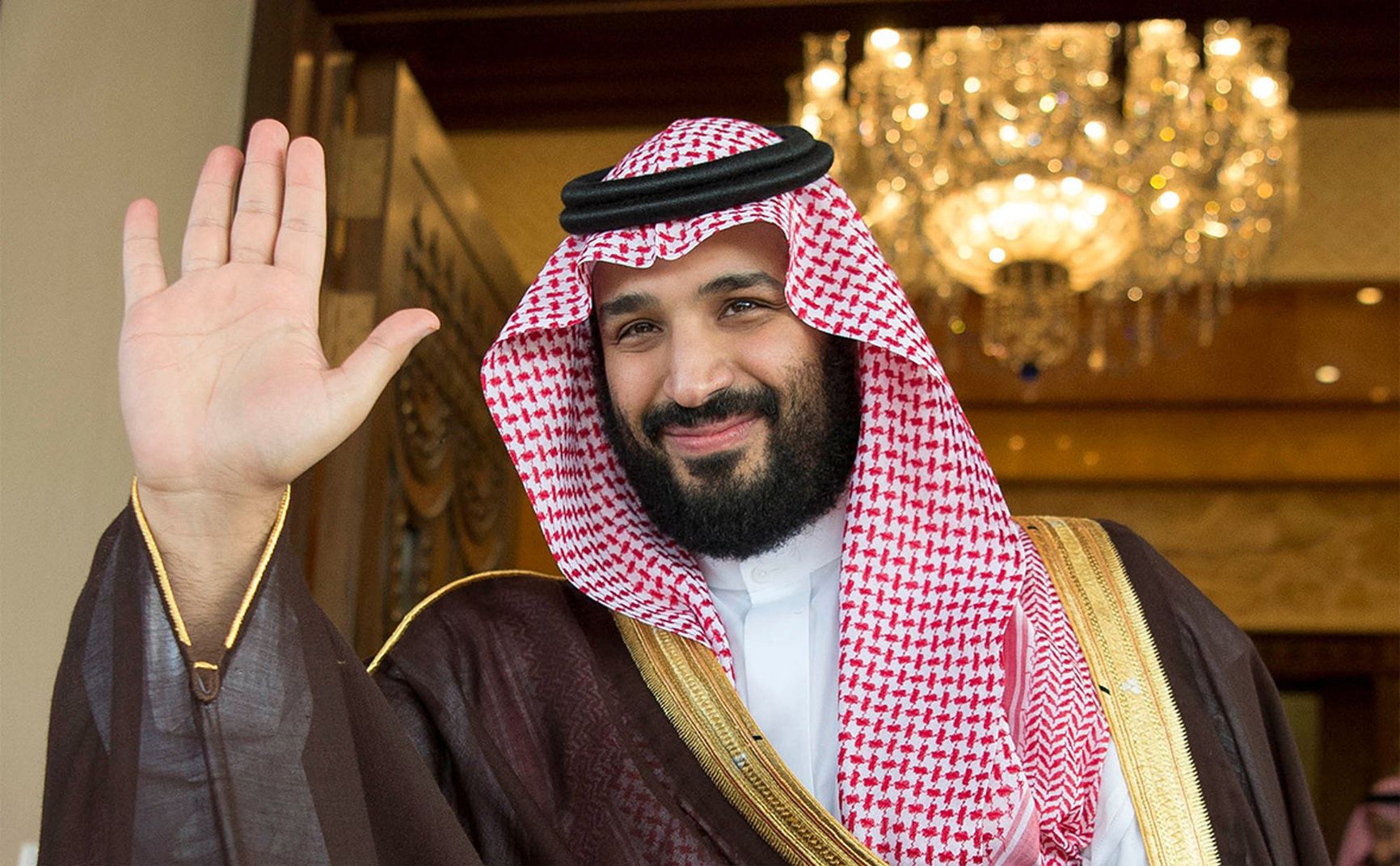

Nearly a month after the ceasefire in Gaza took effect, Hamas has signaled a willingness to hand over control of the territory to a coalition of other Palestinian groups. However, the deal between Hamas and Israel remains on shaky ground. Negotiations for the second phase have been postponed, with both sides making demands that seem nearly impossible to fulfill: Israel insists on Hamas’s complete disarmament, while the Palestinian movement demands the release of Marwan Barghouti, its potential future leader. Even less feasible is Donald Trump’s proposal to relocate Palestinians and redevelop the Gaza Strip. Arab states are willing to finance a solution — but not deportations. Instead, they seek the establishment of a full-fledged Palestinian state.
A fragile deal
The ceasefire between Israel and Hamas — which has been designated as a terrorist organization in Israel, the U.S., and the EU — took effect on Jan. 19, but its feasibility remains uncertain. Whether it can become a lasting agreement — if anything in the Middle East can be called lasting — is an open question.
On Oct. 7, 2023, Hamas militants launched an incursion into Israel, killing more than a thousand people in a single day and abducting around 250 hostages — both Israelis and foreign nationals — taking them back to Gaza. In response, Israel initiated its most extensive military campaign in Gaza since 2014, setting two primary objectives: securing the release of the hostages and ending Hamas’s rule in the enclave. Sixteen months into the war, neither goal has been achieved. Seventy-three hostages remain in Gaza, 35 of whom are presumed dead. Meanwhile, Hamas has made every effort to demonstrate that it still holds power in Gaza and that it has no intention of relinquishing control. This became evident from the outset of the deal’s implementation, when the release of Israeli hostages began.
Brokered by the U.S., Qatar, and Egypt, the agreement was designed to unfold in three 42-day phases. The first phase — set to include the exchange of 33 Israelis for Palestinian prisoners, the withdrawal of Israeli forces, and an increase in humanitarian aid to Gaza — was meticulously detailed from the start. The second and third phases, however, remain loosely defined, leaving the future of the deal uncertain.
The principle of establishing a Palestinian state within the June 1967 borders (as they existed before the Six-Day War), with East Jerusalem as its capital, in accordance with UN Security Council resolutions.

Israeli hostages released on Feb. 8, 2025
Discussions on the terms of the second phase — intended to establish a lasting ceasefire, secure the release of all remaining hostages, and ensure the complete withdrawal of Israeli forces from Gaza — were set to begin in early February but were postponed because of Benjamin Netanyahu’s trip to Washington, where he met with U.S. President Donald Trump and other officials and, by all indications, received a green light to continue military operations in Gaza if he deemed them necessary. Meanwhile, less than three weeks remain until the first phase of the deal is set to conclude, leaving little time for negotiations as to the terms of the second. And even the full implementation of this initial phase is in jeopardy. Throughout the past week, mediators worked to de-escalate tensions and persuaded Hamas to proceed with the deal. Now, reports indicate that Hamas has informed Fatah, which governs the other part of the Palestinian territories — the West Bank — that it is willing to relinquish control over Gaza.
War again?
According to Israeli media, Netanyahu’s conditions for the second phase of the deal include the expulsion of Hamas’s leadership from Gaza, the disarmament of the group’s military wing, and the release of all hostages. However, it remains unclear whether Hamas will agree to many of these demands.
At the same time, Israel is unlikely to accept Hamas’s counter demands, which include the release of figures seen as symbols of terrorism — namely, Fatah leader Marwan Barghouti and the Secretary-General of the Popular Front for the Liberation of Palestine, Ahmed Saadat. In 2004, an Israeli court sentenced Barghouti to five life terms for orchestrating attacks that killed five people. Saadat was convicted in 2008 and sentenced to 30 years for organizing the assassination of Israeli Tourism Minister Rehavam Ze’evi. Barghouti, however, is also the most popular among Palestinian political figures, and polls indicate that if he were to run in a Palestinian presidential election, no other candidate would be able to compete with him.
The principle of establishing a Palestinian state within the June 1967 borders (as they existed before the Six-Day War), with East Jerusalem as its capital, in accordance with UN Security Council resolutions.

Sentenced to five life terms in Israel, Marwan Barghouti remains the most popular Palestinian politician
Negotiations are certain to be difficult. It is possible that the Israeli side will try to prolong the first phase of the deal as long as possible in order to secure the release of the maximum number of hostages and extend the ceasefire — without formally ending the war. However, Hamas is unlikely to accept such a scenario. The question is whether the group is willing to take responsibility for derailing the talks, especially now that the United States is led by the unpredictable President Trump.
Hamas clearly does not fear the continuation of the war — casualties and destruction mean little to them. For the group, Israel’s withdrawal from Gaza is enough to paint itself as the victor. What matters most is maintaining a presence in the enclave at any cost. For Netanyahu, continuing the war would offer a chance to keep his ruling coalition intact — leaders of the far-right parties Religious Zionism and Jewish Power, Finance Minister Bezalel Smotrich, and National Security Minister Itamar Ben-Gvir have threatened to leave the coalition if an agreement with Hamas is signed. Yet in Israel, there is also an understanding that prolonging the war could mean a death sentence for many hostages not included in the initial exchange.
The continuation of hostilities also leaves unresolved the question of Gaza’s future. So far, only two realistic scenarios have emerged: either Hamas remains in control of the enclave, or Israel launches a military occupation. Both options are unfavorable for Israel. In the first case, Hamas emerges victorious; in the second, its actions against Israel gain legitimacy in the eyes of much of the world.
The principle of establishing a Palestinian state within the June 1967 borders (as they existed before the Six-Day War), with East Jerusalem as its capital, in accordance with UN Security Council resolutions.
So far, only two realistic scenarios for Gaza’s future have emerged: either Hamas remains in control, or Israel launches a military occupation
Other alternatives — such as bringing in international peacekeeping forces or transferring control of Gaza to the official Palestinian authorities — seem unlikely at this stage, as they would still require either negotiations with Hamas or the group’s complete elimination. A report published by the RAND Corporation at the end of January highlights this issue.
“The path to lasting peace must be built on effective security measures. The starting point must be the removal of Hamas as the governing entity and source of aggression. A temporary security force under international coalition control — composed of Western and Arab units, with support from vetted and trained Palestinian structures — could provide security and protection for Gaza’s affected residents. Over time, it would be possible to establish effective, legitimate Palestinian security forces,” the report concludes.
According to American experts, governance in Gaza should start at the local level. “Over time, an interim technocratic government could take power, initially under the leadership of a multinational coalition. Then, as part of the national reconciliation process, a temporary constitution and a national election procedure could be developed. New, legitimate Palestinian authorities would then be able to begin negotiations with Israel on the final status of the new state,” the RAND report’s authors suggest.
Who will eliminate Hamas is a question left unanswered by American analysts, but it is clear that no one will do it for Israel. The real issue is whether Israel is capable of doing so itself. Sixteen months of war have failed to achieve this goal. What guarantees that it will succeed now?
This is where Donald Trump comes into play. On Feb. 9, he declared that the U.S. is “going to lose patience” over the conditions in which Israeli hostages are being returned — both the difficulties surrounding their release and their dire physical state. The U.S. president is increasingly signaling that he is ready to do the one thing that could truly threaten Hamas: strip the group of its land — and, consequently, of its power.
The controversial “Trump Plan”
Trump outlined his ideas almost immediately after returning to the White House, proposing to relocate Palestinians to unspecified “Arab countries” in order to rebuild Gaza without obstacles. “It’s literally a demolition site right now. Almost everything’s demolished, and people are dying there, so I’d rather get involved with some of the Arab nations and build housing in a different location where I think they could maybe live in peace for a change,” he stated in January.
Since then, Trump has repeatedly returned to the topic, each time adding new details. During his meeting with Prime Minister Netanyahu in Washington on Feb. 4, the American leader said that the U.S. would not only relocate Gaza’s residents to other countries but also take control of the territory and turn it into the “Riviera of the Middle East.” Trump unveiled grandiose plans: after clearing the rubble, he promised to create an economy in Gaza “capable of providing an infinite number of jobs.” “People living in hell will move into world-class housing. The King of Jordan and the President of Egypt will open their hearts and help us with this,” Trump pledged.
The principle of establishing a Palestinian state within the June 1967 borders (as they existed before the Six-Day War), with East Jerusalem as its capital, in accordance with UN Security Council resolutions.

Destruction in the Gaza Strip
Trump’s subsequent statements were even more shocking. “I'm committed to buying and owning Gaza. As far as us rebuilding it, we may give it to other states in the Middle East to build sections of it, other people may do it, through our auspices. But we’re committed to owning it, taking it, and making sure that Hamas doesn’t move back,” Trump declared on Feb. 10 before later walking back his remarks about purchasing the territory. A day later, in an interview with Fox News, he emphasized that Palestinians displaced from the region would not be allowed to return.
The legal basis on which Trump proposes to act in Gaza remains unclear. Given the fierce opposition from both Palestinians and Arab leaders, it is impossible to predict how such a plan could be implemented.
Some experts view the U.S. president’s remarks as an invitation to dialogue. Sources from the Israeli news outlet Walla report that members of Trump’s team have met with ambassadors from Arab countries that are opposed to the relocation of Palestinians from Gaza. These diplomats were reportedly advised not to outright reject Trump’s idea but instead to present their own proposals for rebuilding the sector. U.S. officials have echoed this approach. In an interview with CBS Mornings, U.S. National Security Advisor Mike Waltz explained that Trump is engaging with key U.S. allies, “asking for their input, asking for their ideas.” Later, in another interview, he suggested that critics “Come to the table with your plan if you don’t like his plan.”
This is not the first unconventional idea Trump has proposed for resolving the Israeli-Palestinian conflict. During his first term, he introduced a plan known as the “Deal of the Century,” which also resembled a business proposal. It involved billions in investments in exchange for territorial concessions from the Palestinians and their abandonment of certain ideological principles. The plan was developed by Trump’s son-in-law and Middle East advisor, Jared Kushner. The idea of transforming Gaza into a “Riviera” also traces back to Kushner’s plan.
Trump was unable to implement the ”Deal of the Century” — the Palestinians rejected it. However, he did achieve the normalization of Israel’s relations with the UAE, Bahrain, Morocco, and Sudan — a sensational series of developments. An agreement with Saudi Arabia was also in the works, but Trump did not have enough time to secure it during his term, and his successor, Joe Biden, was hindered by the war in Gaza — a conflict that, in many ways, was ignited specifically in order to derail these agreements from coming to fruition.
At the same time, it is possible that the U.S. president is floating his ideas precisely to achieve results from an entirely unexpected angle. For now, he seems to find it useful to scare the Arab world and support the Israeli government. For Netanyahu, Trump’s proposals are a true gift that could help him stay in power in Israel. If the right-wing camp believes that Trump can fulfill their dream and literally clear out Gaza, they might turn a blind eye to the continuing implementation of the hostage deal and refrain from dismantling the ruling coalition. The question is whether they will believe in Trump’s capacity to deliver.
The principle of establishing a Palestinian state within the June 1967 borders (as they existed before the Six-Day War), with East Jerusalem as its capital, in accordance with UN Security Council resolutions.
For Netanyahu, Trump’s proposals are a true gift that could help him stay in power in Israel
Another issue complicates matters for Netanyahu: stopping Iran’s nuclear program. Israel had hoped that the U.S. president would support strikes on Iranian nuclear sites, but so far, Trump is not looking to go to war. On the contrary, he talks about a possible dialogue with Tehran while tightening sanctions in hopes of forcing concessions. However, Iran has only hardened its stance in response, declaring that it will not negotiate under pressure.
Interestingly, Moscow, which has always supported “standard solutions” to the Israeli-Palestinian conflict and strongly opposed the “Deal of the Century,” has so far refrained from criticizing Trump’s new plan. “We do not yet know the details, so we must be patient,” Kremlin spokesperson Dmitry Peskov told reporters. In the past, Russian officials did not require “details” to criticize American proposals.
Perhaps the Russian leadership is pausing ahead of a possible meeting between Putin and Trump, where discussions will not be limited to the war in Ukraine. During Trump’s first presidential term, talks between the two leaders resulted in a compromise on one of the issues related to Syria. However, when it comes to the Palestinian question, Moscow no longer has the influence it wielded in Syria in 2017. Either way, Putin clearly does not want to take a strong stance against the U.S. president’s ideas at this moment. The question remains: what comes next, and what will Trump’s plan ultimately lead to?
Arab alternatives
For now, the Arab world is shocked and alarmed by Trump’s statements — so much so that Riyadh, which is usually slow to comment, issued a statement in the middle of the night, almost immediately after Trump held his press conference with Netanyahu:
“Saudi Arabia rejects any attempts to displace the Palestinians from their lands. Crown Prince Mohammed bin Salman reaffirmed the kingdom’s position in a 'clear and unequivocal manner' that allows for no interpretation under any circumstances.”
Riyadh also reacted nervously to Netanyahu’s recent remark made during an interview with Israel’s Channel 14. The interviewer misspoke, saying “the Saudi state” instead of “the Palestinian state.” The Israeli prime minister corrected him, adding: “Unless, of course, you mean the Palestinian state should be in Saudi Arabia — they have plenty of land.” The quip was not well received in the kingdom or in other Arab countries. “Such radical ideas reflect the systematic oppression of the Palestinian people that has continued for 75 years, as well as Israel’s rejection of peaceful proposals from Arab nations,” Saudi Arabia’s Foreign Ministry stated. Furthermore, Riyadh made it clear that there will be no normalization of relations with Israel without the establishment of a Palestinian state.
The principle of establishing a Palestinian state within the June 1967 borders (as they existed before the Six-Day War), with East Jerusalem as its capital, in accordance with UN Security Council resolutions.

Crown Prince Mohammed bin Salman of Saudi Arabia
Saudi rhetoric has become noticeably harsher when compared to the period before Oct. 7, 2023. Back then, Crown Prince Mohammed bin Salman, the kingdom’s de facto ruler, was open to normalizing relations with Israel, and assurances of Israel’s willingness to address the Palestinian issue based on the principle of “two states for two peoples” were sufficient for him. Now, however, Riyadh is no longer satisfied with vague promises and is demanding concrete commitments from Jerusalem, along with a clear timeline for their implementation. Saudi Arabia is not alone in taking this stance. It has been a long time since Arab leaders were as united about anything as they are now when it comes to opposing Trump’s proposals.
At the moment, the Arab position revolves around three main points. The first is a categorical rejection of Trump’s idea to relocate the Palestinians. The second is a joint effort to secure funding for Gaza’s reconstruction. The third and final point is to resolve the Israeli-Palestinian conflict based on the two-state principle.
Some Arab leaders have already discussed this directly with Trump. One of them was King Abdullah II of Jordan, who had the opportunity to personally present his position to the U.S. president exactly one week after the U.S.-Israel summit. Jordan, however, is in a more difficult position than other Arab countries when it comes to rejecting Trump. The country is heavily dependent on U.S. financial aid, and without Washington’s economic and military support, it would be challenging for the Jordanian royal family to maintain power. Additionally, hosting thousands of Palestinian refugees carries the risk of a social crisis. Palestinians already make up at least a quarter of Jordan’s population, and some estimates suggest they constitute more than half. Amman has not forgotten that just a few decades ago, Palestinian factions attempted to assassinate the king and stage a coup.
The principle of establishing a Palestinian state within the June 1967 borders (as they existed before the Six-Day War), with East Jerusalem as its capital, in accordance with UN Security Council resolutions.
Hosting thousands of Palestinian refugees carries the risk of a social crisis
A visit to Washington by Egyptian President Abdel-Fattah al-Sisi was also planned. His meeting with Trump was expected to take place on Feb. 18, but the official date was never set, as Cairo made it clear that the visit would not occur until Trump abandons his ideas of relocating Palestinians. Currently, Egyptian authorities are focused on preparing a summit, scheduled to be held in Cairo on Feb. 27, with the goal of forming a unified position to oppose Trump's actions and fund the reconstruction of the Gaza Strip.
Meanwhile, Egypt's Foreign Minister, Badr Abdel Atti, has arrived in Washington, and immediately after attending the Munich Security Conference, U.S. Secretary of State Marco Rubio traveled to Israel, where he confirmed America’s full support for the Jewish state and stated that Hamas cannot “exist as a military or governmental force.” After his meeting with Netanyahu, Rubio is expected to visit the UAE and Saudi Arabia. He has already expressed his desire to hear from Arab leaders’ ideas for an alternative to Trump's plan.
The principle of establishing a Palestinian state within the June 1967 borders (as they existed before the Six-Day War), with East Jerusalem as its capital, in accordance with UN Security Council resolutions.

Egyptian Foreign Minister Badr Abdel Atti and U.S. Secretary of State Marco Rubio
According to preliminary estimates, the reconstruction of the Gaza Strip will require $80-100 billion. This is roughly 25 times more than the cost of rebuilding after the previous Israeli operation in the region in 2014. The UN estimates that 69% of buildings in Gaza have been destroyed, including 90% of residential infrastructure. It may take several years just to clear the rubble, and Gaza needs to rebuild almost everything: water and electricity supply systems, apartment blocks, hospitals, schools, factories, and agricultural facilities. The key issue remains who will be willing to finance the sector's reconstruction, and under what conditions.
Cairo insists it knows how to solve the problems of Gaza without relocating Palestinians, and the first details of the Egyptian plan have already begun to appear in the media. However, they still need to be discussed before the summit scheduled for Feb.27. It is expected that the unveiling will take place at a meeting in Riyadh, where representatives from Saudi Arabia, Egypt, Jordan, the UAE, and Palestinians will be present.
At the end of this week, Reuters published some ideas that are acceptable to Cairo, Riyadh, and their partners. Among them are debris clearance, the creation of 20 districts for temporary housing, and the creation of a buffer zone and barriers along the border between Egypt and the Gaza Strip in order to prevent tunnel construction and arms smuggling. It is expected that about 50 Egyptian and other foreign companies will be involved in the work. Gulf countries and other international players are expected to finance the project. The fund that will receive the money is to be named after Trump. However, issues related to Gaza's governance and security are still unresolved, and this is the most difficult part.
It is no secret that Egypt, like Saudi Arabia, hopes for the return of the official Palestinian administration to govern the sector. Palestinian Prime Minister Mohammad Mustafa presented plans in Cairo aimed at attracting aid for Gaza's reconstruction, as well as a tentative work schedule. The plan is set for ten years and divided into three phases: meeting the basic needs of Gaza’s residents, rebuilding the economy, and finally, full reconstruction. The Palestinian authorities in Ramallah say they are ready to take responsibility for Gaza's future, but it seems unlikely that they will be able to maintain power without external support. After Hamas's memorandum of readiness to relinquish power in Gaza, this plan becomes more realistic.
Earlier, Cairo made significant efforts to establish a unified committee for the governance of the Gaza Strip, which would include representatives from all Palestinian political factions, including Hamas and Fatah. However, this idea was rejected by Fatah, the leading movement within the Palestinian National Authority (PNA). It is likely that they recognize Hamas's stronger popularity, which could easily push them out of power. Nevertheless, Egypt, along with other Arab capitals, continues to search for ways to ensure that the PNA maintains at least some presence in Gaza. They are also looking for a successor to the current head of the autonomy, Mahmoud Abbas, who turns 90 this year, as well as a figure capable of stabilizing Gaza. Various names have been floated, including the previously mentioned Marwan Barghouti, should Israel release him.
Arab capitals are well aware that international sponsors will not fund Gaza's reconstruction if Hamas remains in power, and independent financing risks triggering American sanctions. However, if the PNA or neutral parties govern Gaza, it would be more acceptable to the international community.
The principle of establishing a Palestinian state within the June 1967 borders (as they existed before the Six-Day War), with East Jerusalem as its capital, in accordance with UN Security Council resolutions.
Arab capitals are well aware that international sponsors will not fund Gaza's reconstruction if Hamas remains in power
Hamas knows this, which is why they claim to be open to any solution that garners support from all Palestinian factions. However, despite these recent statements, it’s likely that they will be very reluctant to share power, especially since they too have their own reconstruction plan for Gaza. According to the Arab TV channel Sky News, their plan spans several years and covers both urgent priorities — such as building temporary housing, repairing hospitals, clearing debris, and restoring order — as well as more ambitious initiatives that include economic development, a focus on tourism, and even the creation of artificial islands similar to those in Dubai.
At this point, Israel is not satisfied with either Hamas or the PNA governing Gaza. Netanyahu reiterated this on Feb. 10 in a Knesset speech following his return from the U.S. It is equally inconceivable that Israeli authorities would be willing to discuss the creation of a Palestinian state right now. When asked what comes next, neither the Israelis, the Palestinians, nor the neighboring countries can provide a definitive answer. What is certain, however, is that Hamas remains in control of Gaza — and in control of the remaining Israeli hostages.
The principle of establishing a Palestinian state within the June 1967 borders (as they existed before the Six-Day War), with East Jerusalem as its capital, in accordance with UN Security Council resolutions.